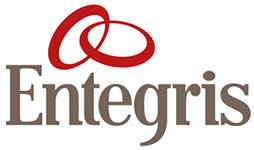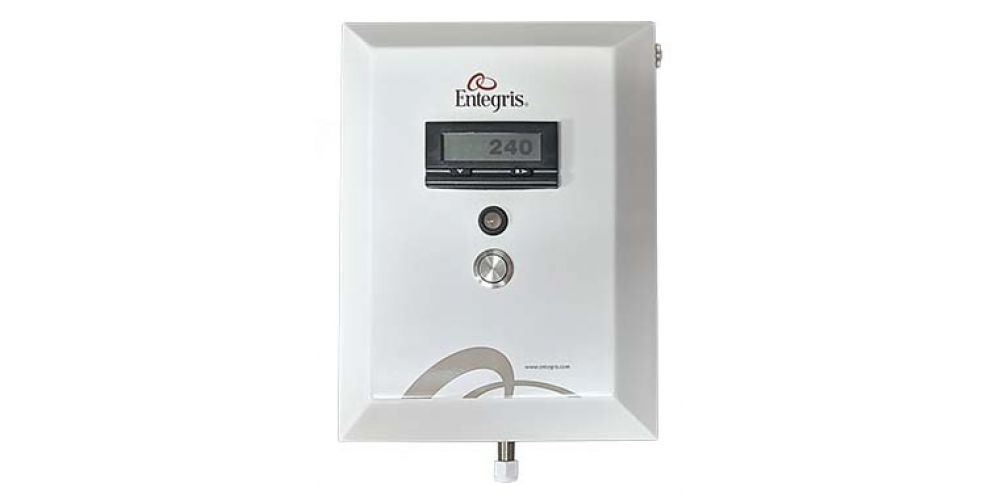Entegris, Inc.

Exhibitor Profile
Entegris, Inc. (NASDAQ: ENTG) is a leading supplier of advanced materials and process solutions for the semiconductor, life sciences, and other high-tech industries.
For over 50 years, we have been committed to solving our customers’ most demanding process challenges through a broad solutions portfolio, collaborative and innovative product development, and a focus on science and applications knowledge.
Entegris has ~8,000 employees throughout its throughout its global operations and is ISO 9001 certified. It has manufacturing, customer service, and/or research facilities throughout United States, Canada, China, Germany, Israel, Japan, Malaysia, Singapore, South Korea, Taiwan and the United Kingdom. Our highly skilled team members, facilities and resources are right where you need them in order to help you solve your most advanced technology challenges.
Products / Markets
Product Index
- Analytische Messtechnik
- Luftfilter
- Luftfiltermedien
- Luftfilterprüfung
Market Scope
- Biotechnologie/Biopharmazie
- Filtrations- und Separationsindustrie
- Halbleiterindustrie
Product Index
- Air Filter Media
- Air Filter Testing
- Air Filters
- Analytical Instruments
Market Scope
- Biotechnology/Biopharmac. Industry
- Filtration and Separation Industry
- Semiconductor Industry
Product Index
- 分析仪器
- 空气过滤器
- 空气过滤器介质
- 空气过滤测试
Market Scope
- 半导体工业
- 生物技术/生物制药业
- 过滤与分离工业
Product Index
- التحاليل
- تصفية الهواء اختبار
- فلاتر الهواء
- مواد فلاتر الهواء
Market Scope
- صناعات الفلترة وفصل المواد
- صناعة أنصاف النواقل
- صناعة التقنية البيولوجية والبيوصيدلية
Product Index
- Filtres à air
- Fluides pour filtres à air
- Instruments analytiques
- Test de filtre à air
Market Scope
- Industrie biotechnologie/biopharmaceutique
- Industrie de filtration et de séparation
- Industrie des semi-conducteurs
Product Index
- Filtri aria
- Mezzi filtranti aria
- Strumenti analitici
- Verifica filtro aria
Market Scope
- Biotecnologie/biofarmaceutica
- Settore filtrazione e separazione
- Settore industria dei semiconduttori
Product Index
- Filtry powietrza
- Media filtrów powietrza
- Narzędzia analityczne
- Testowanie filtrów powietrza
Market Scope
- Biotechnologia/biofarmaceutyka
- Filtrowanie i separacja
- Produkcja półprzewodników
Product Index
- Filtros de ar
- Instrumentos analíticos
- Meios de filtro do ar
- Teste de Filtro de ar
Market Scope
- Ind. de biotecnologia/biofarmac.
- Indústria de filtragem e separação
- Indústria de semicondutores
Product Index
- Аналитические инструменты
- Воздушные фильтры
- Воздушный фильтр Тестирование
- Фильтрующий материал
Market Scope
- Биотехнология / Биофармацевтическая промышленность
- Отрасль фильтрации и сепарирования
- Полупроводниковая промышленность
Product Index
- Filtros de aire
- Instrumentos analíticos
- Medios de filtros de aire
- Prueba del filtro de aire
Market Scope
- Industria de la biotecnología/biofarmacéutica
- Industria de la filtración y la separación
- Industria de los semiconductores
Product Index
- Analitik Cihazlar
- Hava Filtreleri
- Hava Filtresi Ortamı
- Hava Filtresi Test
Market Scope
- Biyoteknoloji/Biyoeczacılık Endüstrisi
- Filtrasyon ve Ayırma Endüstrisi
- Yarıiletken Endüstrisi
Product Index
- 공기 여과재
- 공기 필터
- 공기 필터 테스트
- 분석 장치
Market Scope
- 반도체 산업
- 생명공학/생물 약제학 산업
- 여과 및 분리 산업
Product Index
- エアフィルター
- エアフィルターメディア
- エアフィルター試験
- 分析機器
Market Scope
- バイオテクノロジー・バイオ医薬品産業
- 半導体業界
- 濾過および分離技術工業
What's new
Defining an environment before filtering it: Analytical Services
Effective chemical filtration needs accurate contaminant data. Entegris Analytical Services provides measurement of Airborne Molecular Contamination (AMC) in commercial environments. Contaminants are identified and detected down to parts per trillion (ppt, 10-12) concentration levels, with 99% confidence. Whereas health concerns usually center around ppm level contamination, product and electronics corrosion can happen at much lower concentrations.
Asset archives, data centers, control rooms, hospitals, fuel cells, turbines all need to be protected from gas-phase impact. Qualitative measurement techniques like corrosion strips do not provide sufficient information to formulate optimized filter solutions. Entegris provides filtration solutions that are tailored for the respective application, based on competent environmental analysis.
Visit us in Hall 8 at Booth C40 and several of our technical presentations in the conference.

